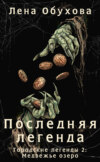Loe raamatut: «Do not Disturb! I'm Drawing»
Midagi läks valesti, proovige hiljem uuesti
€22,99
Žanrid ja sildid
Vanusepiirang:
0+Ilmumiskuupäev Litres'is:
25 mai 2021Objętość:
219 lk 199 illustratsiooniISBN:
9783838274546Tõlkija:
Kustija:
Õiguste omanik:
Автор









